Hyundai i-30: Front Radar System / General safety information and caution
| General Safety Information
and Caution |
|
1. |
Be careful when driving the vehicle using the smart cruise control system
as follows.
|
(1) |
On curves or inclines/declines
|
• |
The smart cruise control system may have limits to detect
distance to the vehicle ahead due to road and traffic
conditions.
|
|
• |
On curves or inclines/declines, the smart cruise control
system may not detect a moving vehicle in your lane,
and then your vehicle may accelerate to the set speed
directly. Also, the vehicle speed may slow down abruptly
when the vehicle ahead is recognized. Select the appropriate
set speed on curves or inclines/declines and control
the vehicle speed by applying the brake pedal if necessary.
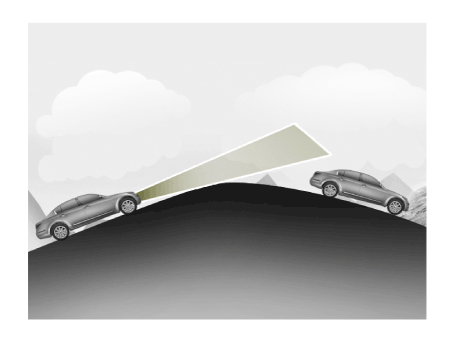
|
|
• |
Your vehicle speed can be reduced due to a vehicle in
the adjacent lane. Apply the accelerator pedal and select
the appropriate set speed. Check to be sure that the
road conditions permit.

|
|
|
(2) |
Lane changing
|
• |
A vehicle which moves into your lane from an adjacent
lane cannot be recognized by the sensor until it is
in the sensor's detection range.
|
|
• |
Be always cautious because a vehicle which suddenly
moves into your lane can be recognized late by the sensor.
|
|
• |
If the vehicle which moves into your lane is slower
than your vehicle, the speed may decrease to maintain
the distance to the vehicle ahead.
|
|
• |
If the vehicle which moves into your lane is faster
than your vehicle, your vehicle will maintain the selected
speed even the vehicle is in the sensor's detection
range.
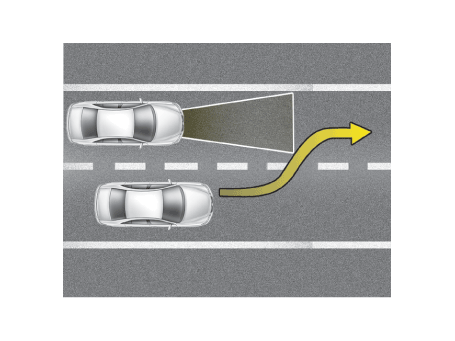
|
|
| •
|
Even though a vehicle is in the same lane, a vehicle which is
out of the sensor’s detection range cannot be recognized by
the sensor.
|
| –
|
Small vehicle such as motorcycle, bicycle and cultivator
|
| –
|
A vehicle offset to one side
|
| –
|
A slow-moving vehicle or sudden-decelerating vehicle
|
| –
|
A vehicle with small rear profile such as trailer with no loads
|
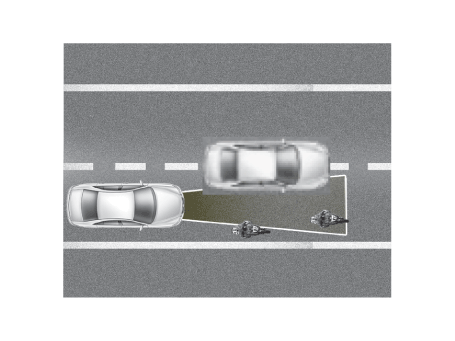
|
|
2. |
In this following situation, the front vehicle can’t be recognized correctly
so control the vehicle speed by applying the brake pedal or accelerator
pedal if necessary.
|
(1) |
When the vehicle is pointing upwards due to overloading in the
trunk
|
|
(2) |
While making turns by steering
|
|
(3) |
When driving to one side of the lane
|
|
(4) |
When driving on narrow lanes or on curves
|
|
|
3. |
If the smart cruise control is left on (CRUISE indicator light ON),
the smart cruise control can be switched on accidentally. Keep the smart
cruise control system off (CRUISE indicator light OFF) when the smart
cruise control is not in use, to avoid inadvertently setting a speed.
|
|
4. |
Observe a regulation speed on road when setting the cruise speed.
|
|
5. |
Use the smart cruise control system only when traveling on open highways
in good weather. Do not use the smart cruise control when it may not
be safe to keep the car at a constant speed, for instance, driving in
heavy or varying traffic, or on slippery (rainy, icy or snow-covered)
or winding roads or over 6% up-hill or down-hill roads.
|
|
6. |
Pay particular attention to the driving conditions whenever using the
smart cruise control system.
|
|
7. |
The vehicle cannot be stopped by using the smart cruise control system.
If emergency stop is necessary, you should apply the brakes.
|
|
8. |
Keep the safety distance according to road conditions and vehicle speed.
If the following distance is too close at a high speed driving, it is
dangerous.
|
|
9. |
The smart cruise control system can not recognize a stopped vehicle,
pedestrians or an oncoming vehicle. Always look ahead cautiously to
prevent unexpected and sudden situations from occurring.
|
|
10. |
The smart cruise control system is not a substitute for safe driving
practices but a supplementary function only. It is the responsibility
of the driver to always check the speed and the distance to the vehicle
ahead.
|
|
11. |
In front of you, vehicles moving with a frequent lane change may cause
a delay in the system's reaction or may cause the system to react to
a vehicle actually in adjacent lane. Always look ahead cautiously to
prevent unexpected and sudden situations from occurring.
|
|
12. |
Your vehicle may accelerate when a vehicle ahead of you disappears.
When you are warned that the vehicle ahead of you is not detected, drive
with caution.
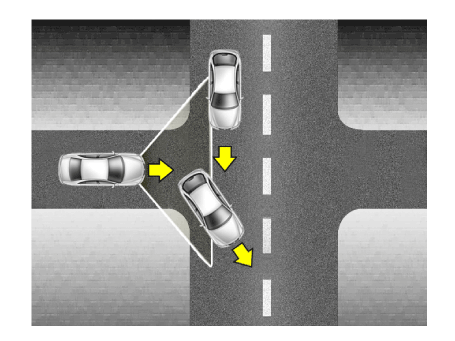
|
|
13. |
When vehicles are at a standstill and the vehicle in front of you changes
to the next lane, be careful when your vehicle starts to move because
it may not recognize the stopped vehicle in front of you.
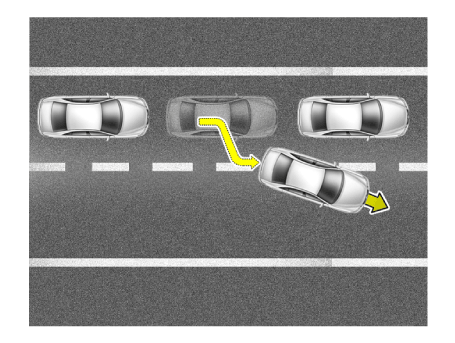
|
|
14. |
Always look out for pedestrians when your vehicle is maintaining a distance
with the vehicle ahead.
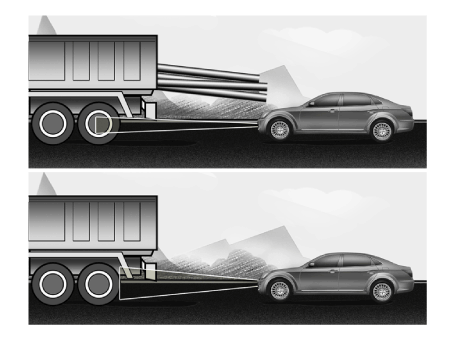
|
|
15. |
Always be cautious for vehicles with higher height or vehicles carrying
loads that sticks out to the back of the vehicle.

|
Other information:
Description and operation
Description
Due to the considerably more frequent occurrence of starting operations, the
electrical load that occurs often leads to voltage dips in the vehicle network.
In order to stabilize the power supply for certain voltage-sensitive electrical
components, a DC/DC converter is used in conjunction with the ISG function...
Replacement
•
Put on gloves to prevent hand injuries.
•
When removing with a flat-tip screwdriver or remover, wrap protective
tape around the tools to prevent damage to components...
Categories
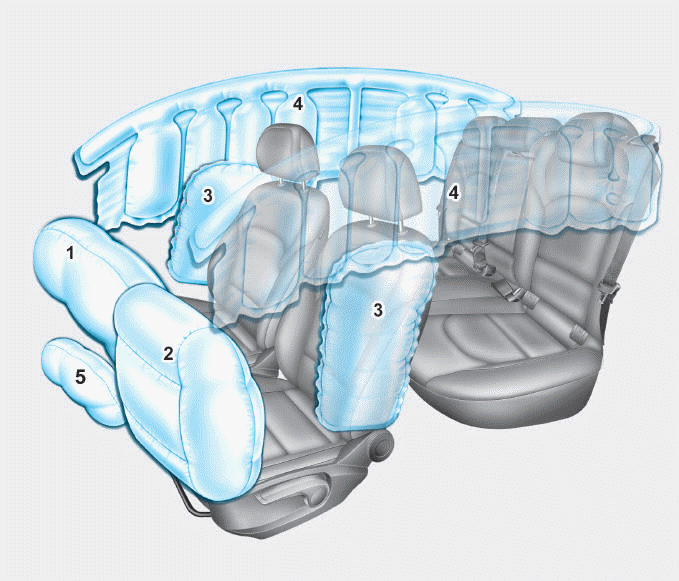
1. Driver’s front air bag
2. Passenger’s front air bag
3. Side air bag*
4. Curtain air bag*
5. Knee air bag*
6. Front passenger air bag ON/OFF
switch
read more










